Services

Dry Needling
This technique is used to treat Myofascial Trigger Points (MTPs). It involves inserting a very fine needle into the trigger point, causing a local muscle spasm that leads to an involuntary muscle contraction. This contraction normalizes muscle tone and causes rapid changes in the tissue.
FREQUENTLY ASKED QUESTIONS
Are the needles safe?
Yes! Like all invasive physiotherapy practices, there are risks, but the most common side effect is local pain around the needle insertion point, which typically lasts 12-24 hours.
Does it hurt?
It can be a painful technique, as the pressure or insertion of the needle into the trigger point causes intense pain. However, it is very effective, and within 24-48 hours, the pain significantly decreases and the muscle relaxes, returning to its normal state
Can I exercise afterward?
It is recommended to avoid strenuous or high-impact activities immediately after dry needling to allow the body to recover and maximize the benefits of the treatment, although it is not contraindicated.
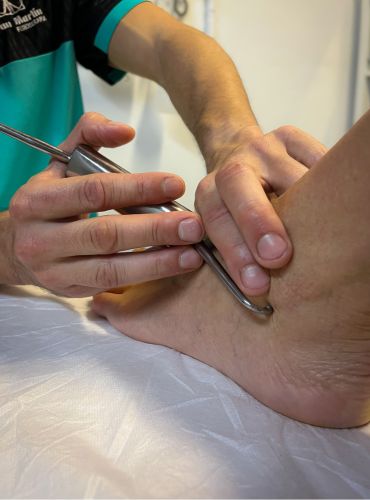
Instrumental Myofascial Fibrolysis
This is a technique applied using “hooks” (usually metal) on the skin, which allows for more specific access to the sliding planes of soft tissues. By doing so, it improves the movement of these tissue planes, enhancing their elasticity.
The goal is to release adhesions and/or irritative corpuscles from these inter-tissue sliding planes through targeted tissue mobilizations.
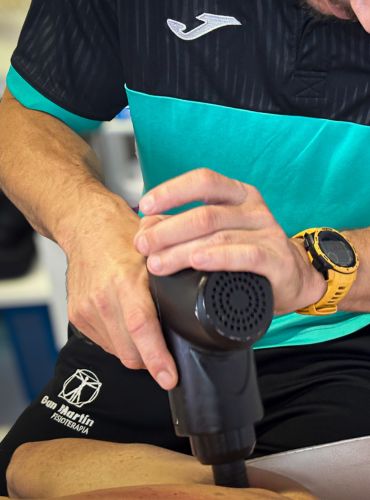
Hypervolt
A massaging device shaped like a gun or drill, with an interchangeable rubber or soft material head that percusses the surface of a muscle. It works on soft tissue to relax or stimulate it, relieving pain and muscle stiffness, increasing range of motion, and improving blood circulation.

Kinesiotaping
This is a taping technique that uses adhesive strips of different colors. The key difference with other types of taping materials is the high elasticity of these strips, which allows tension to be applied when they are placed on the skin
The studied benefits are:
Relieves pain: reduces pressure on subcutaneous sensory receptors
Provides mobility: improves neuromechanical response
Reduces inflammation and bruising: accelerates local drainage in the affected area and improves circulation and fluid elimination
Does not limit sports movements
Improves postural issues: stimulates receptors to increase body awareness and correct imbalances.
Two main uses:
Joint level: helps stabilize joints
Provides feedback for patients to maintain proper positions, especially for the ankle, knee, and shoulde.
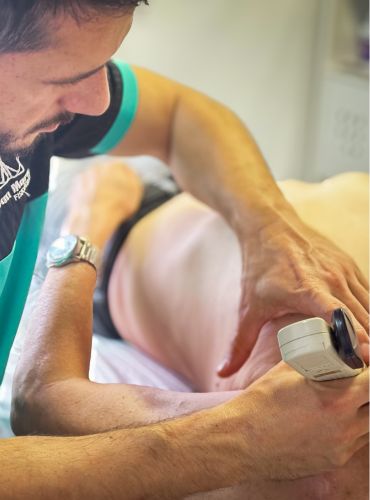
Pointer Excel II
A cutting-edge device that uses electrical stimulation to target nerve endings, aimed at locating “trigger points” and relieving certain types of pain.
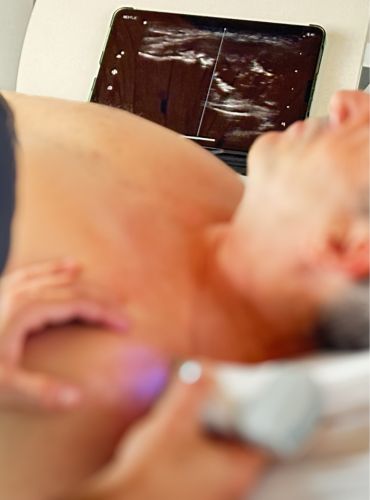
Musculoskeletal Ultrasound
Musculoskeletal physiotherapy ultrasound is a harmless imaging technique that provides real-time images of joints, muscles, tendons, and ligaments in motion. In physiotherapy, as in all medical areas, assessment is key to providing the right treatment from the outset. Musculoskeletal ultrasound allows, alongside a thorough evaluation, a quick and effective diagnosis to ensure a more precise and effective recovery.
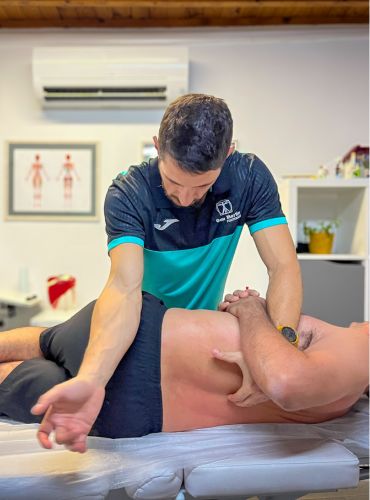
Osteopathy
Osteopathy is a therapeutic discipline that relies on a deep understanding of the anatomy and physiology of the human body. It is based on how different body tissues interact to produce diseases and dysfunctions. Osteopathy adopts a holistic approach, considering bio-medical-psychosocial factors, and promotes and restores the mechanical balance of all body tissues. While joint techniques and the well-known “cracks” are the most recognized, osteopathy includes much more than these techniques.
¿What makes us unique?
We offer you professional and personalized care that will help you keep your body healthy and in optimal condition.